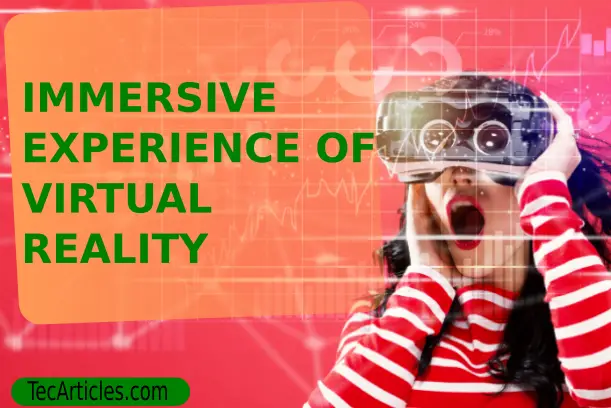Do you know that between 1968 and 1980, the CIA contributed over 80,000 US Dollars to Sutherland’s invention on Virtual reality? That is about 234,793.04 in 2018. That alone from the CIA, there were several other investors into the project back then. This is to show the height of vision upheld of Virtual reality.
Today, several names have been attached to the concept called virtual reality – such as virtual environment. How the virtual reality works is interesting as it cuts across your virtual experience, immersion, and virtual interactivity. Although immersion and interactivity helps in formulating your virtual reality experience, there are key things that constitute a true virtual reality experience.
These are; tracking ability of user’s head and eye movement, and the proportionate image adjustment on the user’s screen displaying a change in perspective.
An interesting thing about Virtual reality is that you will have a feeling that you are inside and part of the world you’re viewing. You will be able to interact and relate with the environment meaningfully. You will have illusive feeling of reality of the world you are in view of.
Through the immersive experience and the interaction that you would have with the environment is what we call telepresence. Telepresence is the height of how you feel present in the virtual world while you still maintain your presence in the physical world. It is like a teleporting by illusion. So, a virtual reality makes you experience unawareness of time and space. You will be practically unaware of your real environment while your entire focus is on the virtual environment that you are immersed into.
According to Jonathan Steuer, immersion has two components – the depth and breadth of information. The first component, depth of information is the quality and amount of signal receive by a user as he/she interacts with the virtual world or virtual environment. Normally, for a user, it could be in form of the display resolution, environmental graphics, and sophisticated audio system output and so on.
While the breadth of information is quantity of sensory information available for stimulation, virtual environment has very sound sensory stimulatory effects that captivates and submerges you in the virtual world. Most of the virtual environment devices leverage on sound and visual components – though more attention is being placed on other sensory elements of the body such as sense of touch.
In the virtual environment is the haptic system which gives as user feedback on the interaction between force and touch.
If you are experiencing an immersive experience, you will able to explore the totality of the virtual environment and alter your perspective from time to time. This is because the environment you are exploring is bound to change seamlessly and your reaction to the changes is a function of immersion. For example, if the virtual environment is made of a statue in the middle of your room, from there, you would be able to see different dimensions of the statue depending on where you are looking.

